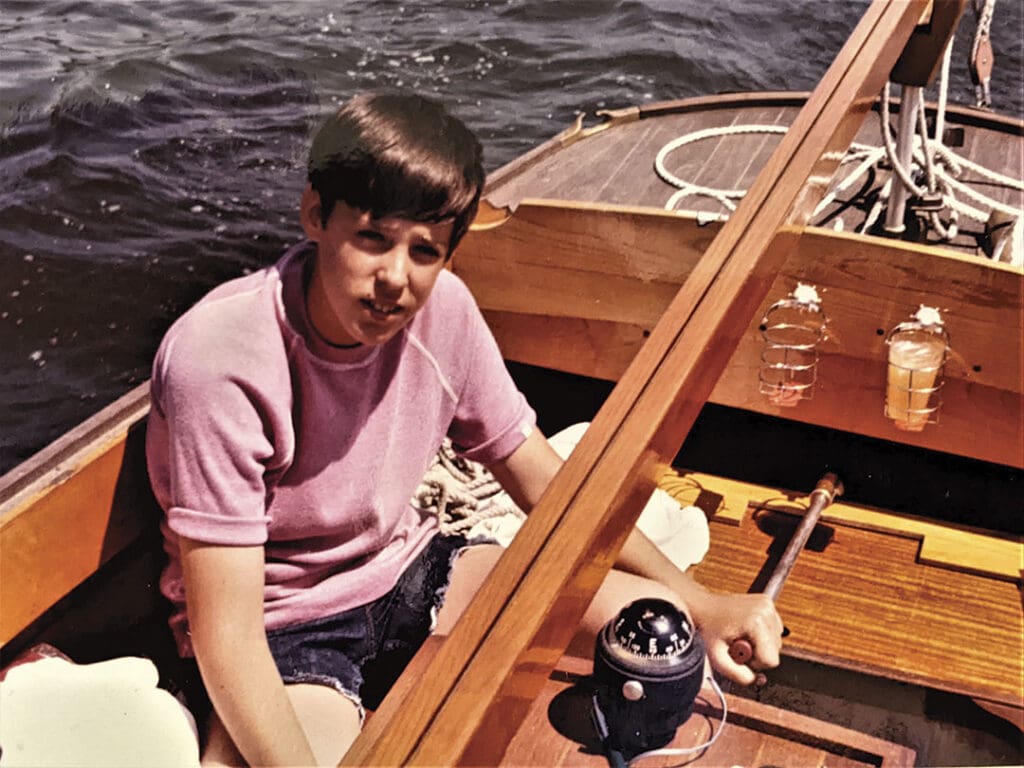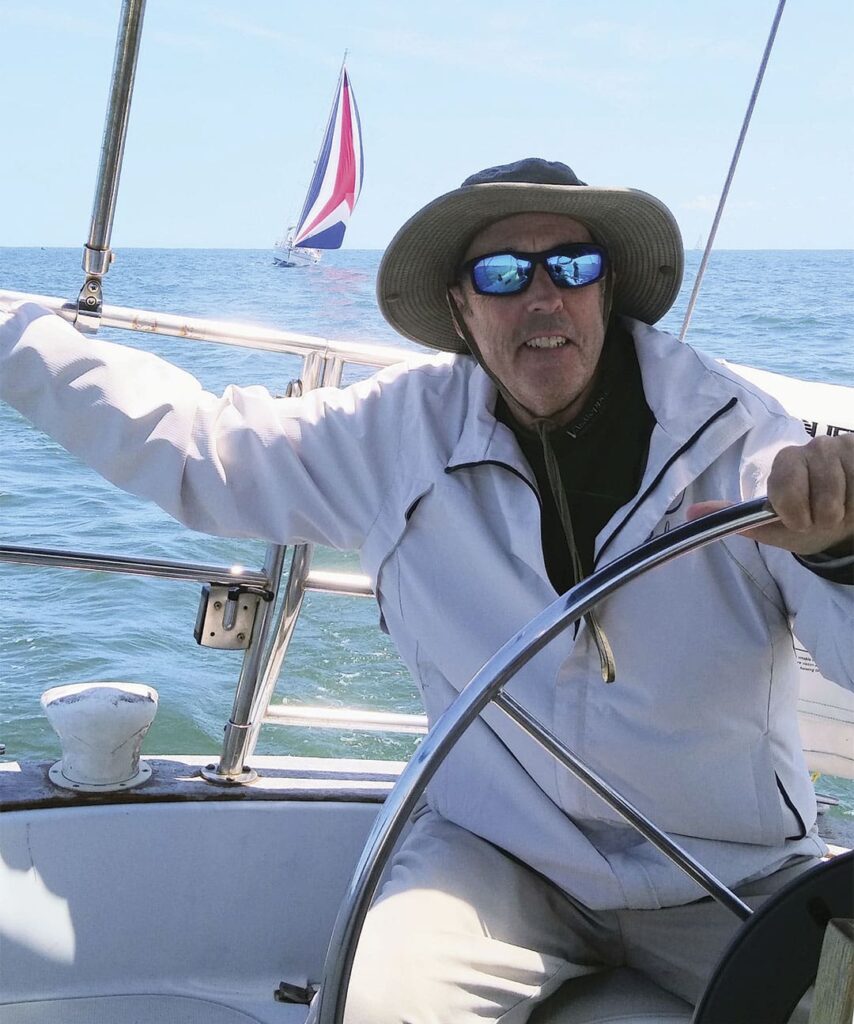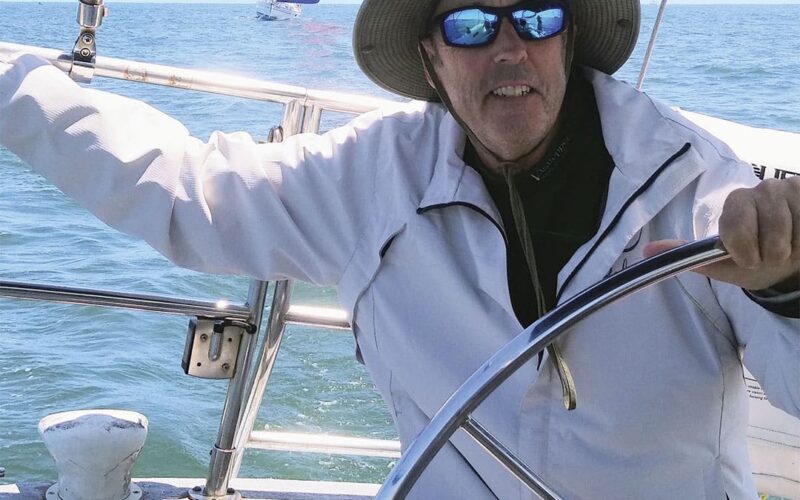
There’s nothing quite like the feel of a tiller or wheel in your hands, that tactile sensation of flesh on wood as you steer the vessel to a distant waypoint. To me, this has always been the most rewarding part of sailing. With gentle movements of your fingers, the boat responds—silent, stealthy, ready to go anywhere there’s wind.
Driving a boat is all about the senses, and the skilled sailor learns to use them all. The wind on your face, the angle of heel and the gurgle of water sliding past the hull all play a part in the ballet of sailing to guide you on your way. Even in the dark of night, it’s possible to tune in and connect with the gloaming. Like Hemingway said, “A man is never lost at sea.”
When learning to sail on a Sunfish at summer camp in Ohio, my instructor noticed I was moving more like a snake than a boat. “There are no curves in sailing,” he barked from the chase boat. “Sail a straight line, then change to another—at a precise angle to the wind.” Thoroughly flummoxed, I pleaded: “How do I make this thing go straight?”
The solution he advised was to pick an object on shore and aim for it. I fixed my gaze on a distant barn and from that day on, I sailed that boat arrow-straight. The following winter in math class, I had an epiphany when I realized that sailing was nothing but a geometric diagram on a plane of water; a series of acute and obtuse angles and polygons.

Sailing a boat is also about responsibility and personal growth. When you’re the one steering a multi-ton piece of fiberglass through a poorly marked inlet, you better know what you’re doing. If something goes awry, you can’t say, “It wasn’t my fault!” The first time I took the wheel of a big boat, it was a friend of a friend’s 50-foot racer on a weekend delivery across Lake Erie. “Let the new guy have a turn at the wheel,” the owner said, gamely. It was well after sunset, the offshore winds were up and there were all these experienced sailors around me. It wasn’t until I grabbed the huge metal wheel that I realized how much of a burden it was. “Don’t screw up,” that little voice kept saying in my head. “Or you won’t get a second chance.”
I was glad it was so dark; no one could see how nervous I was. Around midnight, we had to execute a jibe, and when I sang, “Prepare to jibe—jibe ho!” everyone actually followed my directions and scrambled around the deck. I stood my watch until we saw the lights of Canada, and when done, my legs felt like rubber. Wow, I thought. This is so cool!
Humans are creatures of habit, and I’ve found through many years of being guest crew that various owners have their own comfort zones, which tend to fall into one of two categories: (1) they want nothing less than to perpetually drive their boat and won’t let anyone else touch the wheel, or (2) they prefer that others drive, which allows them to focus on everything else that needs to be done. But like a well-run company, the well-run sailboat cross-trains everyone on the team to fill various onboard roles and fit in where needed.
And if you feel, as I do, that it’s every old salt’s responsibility to get fresh blood into the sailing lifestyle, there’s no better way to do that than to plop a neophyte behind the helm and teach them how to drive. I insist on it for everyone who comes sailing with me. I’ll hover nearby and give them gentle, confidence-building tips without overloading them with minutiae. Now is not the time to talk about the numbers on the magnetic compass. Just relax, feel the helm and aim for that white house on the shore.
Almost immediately they see the similarities and differences between cars and boats and, hopefully, they begin to connect with the boat on an emotional level. The most frequent question I get is, “How do I stop this thing?” And after an hour, when it’s time to give someone else a turn, I’ll know I’ve done well if the driver-in-training is reluctant to give up the wheel.

